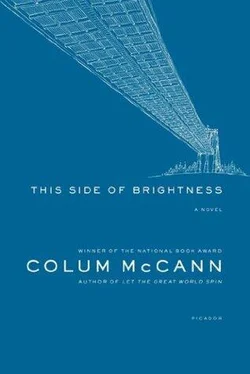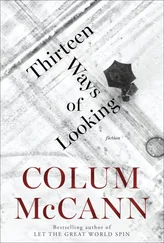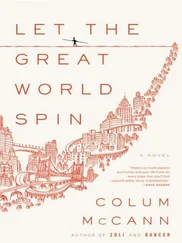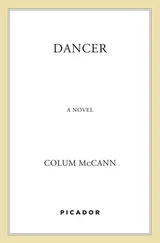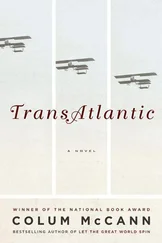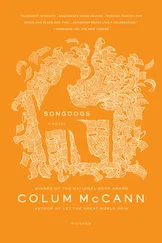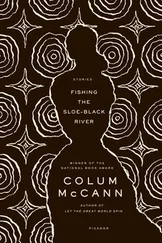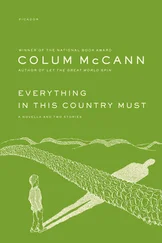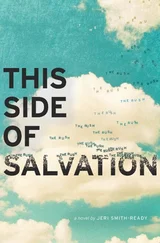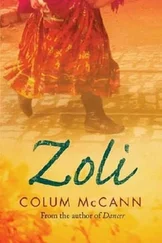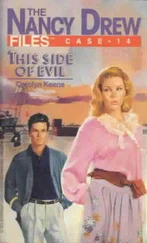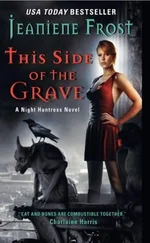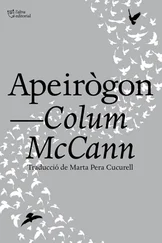“I’d like to make a map of your face.”
“What you talking about, a map of my face?”
“Just a map.”
“Maps for driving with, motherfucker.”
“Come on, let’s go try it.”
“Where?”
“My nest.”
“I ain’t climbing nowhere. You just want a knock.”
“Knock knock.”
“Who’s there?”
“Treefrog.”
“Treefrog who?”
“Treefrog screw you.”
“That ain’t even funny,” she says.
“It weren’t meant to be funny. Come on. I’ll show you.”
He passes the cigarette, and she drags hard even though the filter is burning. “Maps?” she says.
“I keep maps. Sometimes I make maps.”
“What the hell you make maps for? It’s not as if you’re going anywheres.”
* * *
In the darkness, beneath his nest — she will not climb — he closes his eyes and touches the side of her face. She shivers for a moment, but he lets his fingers rest until her body stops quaking and she relaxes and says, “This is stupid.”
The movement of his fingers is slow and precise. He will trace a line across from ear to nose, a perfectly straight line; otherwise the translation will be inaccurate. He begins at the outer edge of her ear — he has removed his gloves for exactness, spat on his fingers to clean off the tunnel dust, dried them on his overcoat. He moves from the top of her ear to the under-hang of flesh, and he gauges the tiny distance along the top of his forefinger. The distance decided, Treefrog opens his eyes and reaches into his overcoat pocket for a piece of graph paper and a pencil. On the graph paper he draws two lines, one vertical, one horizontal, meeting at an axis, fixed and finite in the center of the paper. Elevation on the vertical, distance on the horizontal. He flicks the lighter with one hand, then the other, and marks the elevation of her ear, the tip and the underhang: two small dots of pencil on the graph paper.
He must be careful; the eraser is down to a stub, and he doesn’t want to make a mistake. Closing his eyes once more, he feels his way along her ear — it is full of rumples and ridges — and she says, “Ohhhh.”
The tunnel is achingly quiet, only the zip of cars above, a sound so constant that it is swallowed. He remains with his fingers tentative at the center of her ear, near the well of her eardrum, and he can feel the nervousness tremble through her.
“I don’t like you touching me there,” Angela says, but he tells her that it will look like a miniature lake. Some other time, he thinks, he will begin from a different point, maybe at the lobe where the missing earring will make a sinkhole of sorts. Angela shifts and lights another cigarette. He doesn’t want to feel her face while she smokes; he says it will give a false reading, the suck-in of cheeks when she draws on the filter. She smokes it down to the quick and then Treefrog crushes it underfoot.
He snaps his eyes shut and moves across the ear until his finger touches the side of her face at the soft point just at the top of her jawbone.
“You sure your fingers is clean?” she asks.
“Yeah,” he whispers.
There is a tiny ridge at the bone and he marks it on his graph. Angela is quiet now, and she too closes her eyes. Treefrog pecks at the air with his head and he is sure that he can smell the lovely mustiness of her, but then she winces when he touches the bruise on the middle of her cheek — the topography of violence — and he tries to skim the very edge of her skin where it must be colored blue.
“That hurts.”
“Sorry.”
If she cries, he wonders, will he be able to stop the water with his fingers so that the tense molecules might be arrested for a single second, become forever a part of her face? But she doesn’t cry, and his fingers move a little more quickly now, away from the bruise. Her skin makes a little bump toward the side of her nose where it flares out.
“You got a nice nose,” he says to her, as his fingers begin the rise to a bone that feels as if it has been broken many times. He touches her nostril and comes to the very center of her face, smooths his fingers along her cheek.
“You done yet, asshole?”
“I have to do the other side.”
“Why?”
“’Cause you can’t have half a face.”
“What if Elijah sees us?”
“I’ll make a map of his fist. It’ll look like a ridge with a big knob on the end.”
She chuckles.
“Stand still, goddammit.”
Treefrog reaches up with the left hand and strokes her right ear, remembering the exact movements of his fingers on the opposite side of her face. It is vital that each hand do an equal amount of touching. His fingers move across her cheekbone — no bruises on this side — and with infinite tenderness he maps the geography of Angela. When he is done, he climbs up to his nest, brings down four blankets, and they sit in the tunnel by the Melting Clock mural. A train whizzes past not ten feet away. He joins the dots together on the graph paper, licking the lead end of the pencil so that the joining line is dark and prominent.
He works with great care, making sure that the lines are consistent, uniform, unwavering, that a gentle curve appears between dots, that the graph doesn’t become jittery or messy. He never once uses the eraser. The lighter and the pencil are switched from hand to hand, his fingers shaking in the cold. Angela looks over his shoulder, her chin on his overcoat, saying, “This is about the stupidest thing I ever seen.”
When Treefrog is finished, he holds the paper up and shows Angela the rise and curl of her face — the canyons and ridges and riverbeds and hanging valleys that she has become.
“Heyyo,” he says to the paper.
“That’s me?”
“There’s your ears, that’s your nose, that’s your cheek.”
“Looks bumpy.”
“I can change the scale,” says Treefrog.
“Do me a favor, Treefy?”
“Yeah.”
“Get rid of the bruise there,” she says.
He looks at her and smiles.
Scraping his fingernails along the top of the eraser to make sure it doesn’t leave black smudges on the graph paper, he scrubs out the hillock where the bruise was. She kisses him on the cheek and softly says, “Doctor Treefrog.”
“If I take readings of everywhere I could make a map of the rest of your face. I’d have all these contours and your face’d look like this.” He draws a series of distorted circles. “Your nose’d be like this. And your ear’d be like this. And your lips, they’d be weird. Like this.”
“Where d’ya learn to do this?”
“I taught myself. I been making maps for a long time.”
“You ever do it for anyone else?”
“I did it for Dancesca.”
“Who’s she?”
“I told you about her. And Lenora too. My little girl.”
“Where is she?”
“I don’t know.”
“Nobody knows where I is either,” says Angela.
* * *
Walker sits by the window. The apartment has been remodeled to twice its former size, the landlord stung for housing violations. The view from the window has changed in recent years — the sunlight is blocked out by large housing projects that step their way across the city. Giant gray and brown buildings, they frown against the skyline. Washing flutters out from balconies. Boys chat through adjacent windows, using tin cans and string. Suicides are heard for the length of their screams.
Only Louisa and the boy remain in the apartment with him. Both Walker’s daughters have left to get married, Deirdre to a steamfitter in the Texas oilfields, Maxine to a welder from Philadelphia. Slowly the girls have faded from his life. Photographs of their children sometimes arrive late, as if they’ve suddenly been born at the age of one or two. Walker often thinks of making a trip to see them, but it never happens; his bank account will not allow it.
Читать дальше
